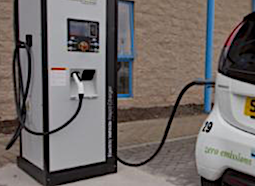Scotland’s First Minister Nicola Sturgeon announced on Monday £16.7 million of additional funding to help significantly increase the number of green buses across the country and improve access to electric charging points in homes, businesses and public spaces.
An expansion of the “Switched on Towns and Cities” initiative will also help create 20 new “electric towns” by 2025 to help local communities increase electric vehicle uptake.
Last year’s Programme for Government committed to set ambitious targets to reduce greenhouse gas emissions and promote the electrification of the road network, with the aim of removing the need for new petrol or diesel cars or vans on Scotland’s roads by 2032.
Sturgeon made the announcement at the Scottish Fire and Rescue Service (SFRS), which is committed to reducing its carbon footprint with plans to introduce up to 100 ultra-low emission plug-in vehicles to its light fleet.
The SFRS is currently working with the Transport Scotland Switched on Fleet Programme to deliver its ambitions.
The SFRS is also looking at how it could utilise its 356 fire stations across the country to support the ongoing development of charging networks across Scotland’s communities.
Sturgeon said: “In last year’s Programme for Government we committed to remove the need for petrol and diesel cars and vans on Scotland’s roads by 2032.
“Electrifying the road network and transforming the way we travel is vital to reducing our carbon emission, tackling climate change and improving air quality.
“Last year’s Programme for Government set out our ambition as a country and some key steps including making the A9 Scotland’s first electric trunk road.
“This year we want to go further still, and through the package of support we’re announcing in this year’s Programme for Government, as well as our continued investment of £1 billion a year in low carbon and public transport, more people will be able to play their part in putting Scotland at the forefront of low carbon travel.
“As part of our public fleet I’m pleased our emergency services are playing a leading role in adopting low emission vehicles – setting an example for other parts of the public and private sectors.
“Through continued investment, and work to encourage communities to embrace the social change required, we can make our towns and cities more desirable places to live and work in, and develop a sustainable future for younger generations.”
